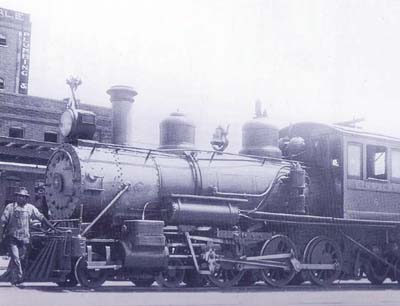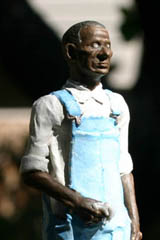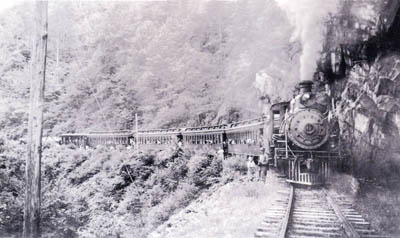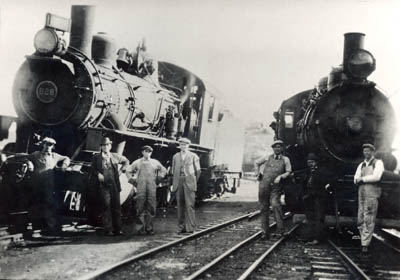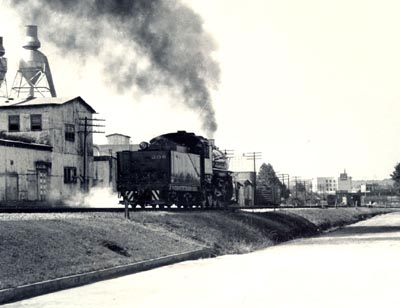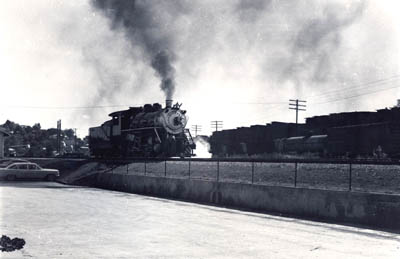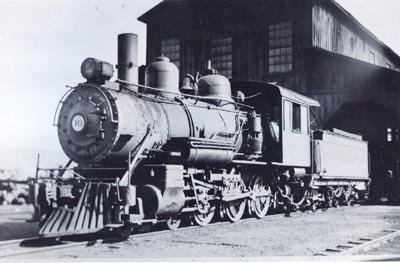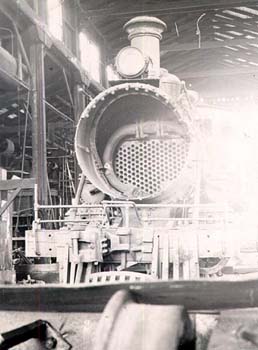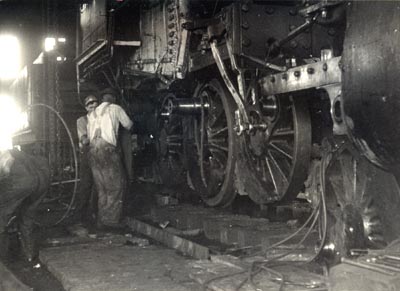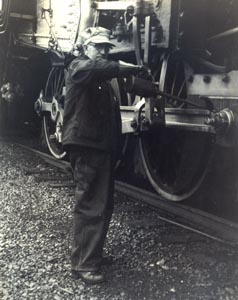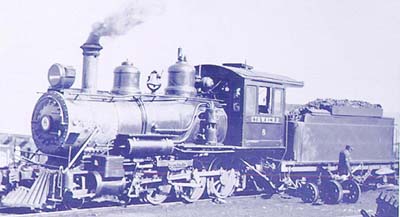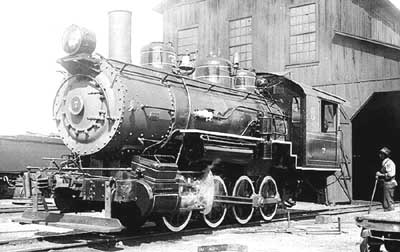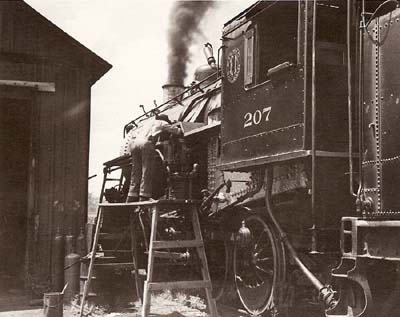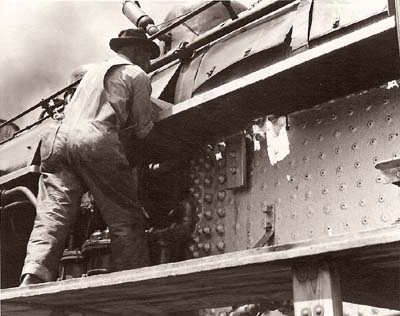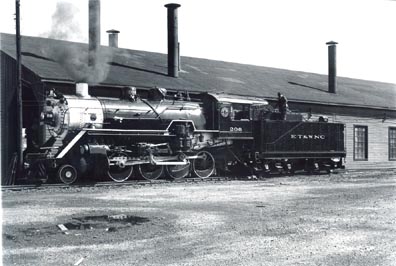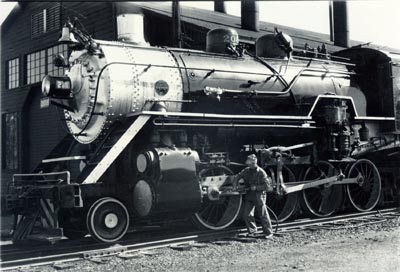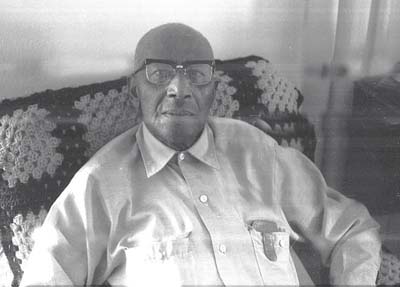Click on each photo to see a larger view. |
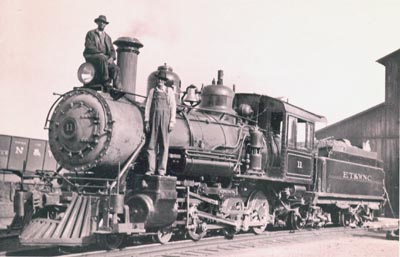
|
|
Date: 1935 |
Above is a photo of Andy Kern sitting atop the headlight on Engine 11. I think the other man is Hugh Saylor. In my opinion, Andy Kern was the most unsung and under-mentioned man the ET&WNC ever had. Andy was working at the shop when Mr. Crumley went to work in 1906 and was still working until right before the steam engines left in 1967. Andy told me that he just came over to the shop and went to work when he was young, and eventually Mr. Hardin, the General Manager, started paying him. I have done a lot of work on steam locomotives myself in the last thirty years or so, and I must say that Andy Kern had more steam locomotive knowledge than anybody I have ever known, and I have known a bunch of them. He would have made a great engineer except that during his time there were no black engineers anywhere. Below is a photo of Andy outside the ET&WNC Depot in Johnson City. |
